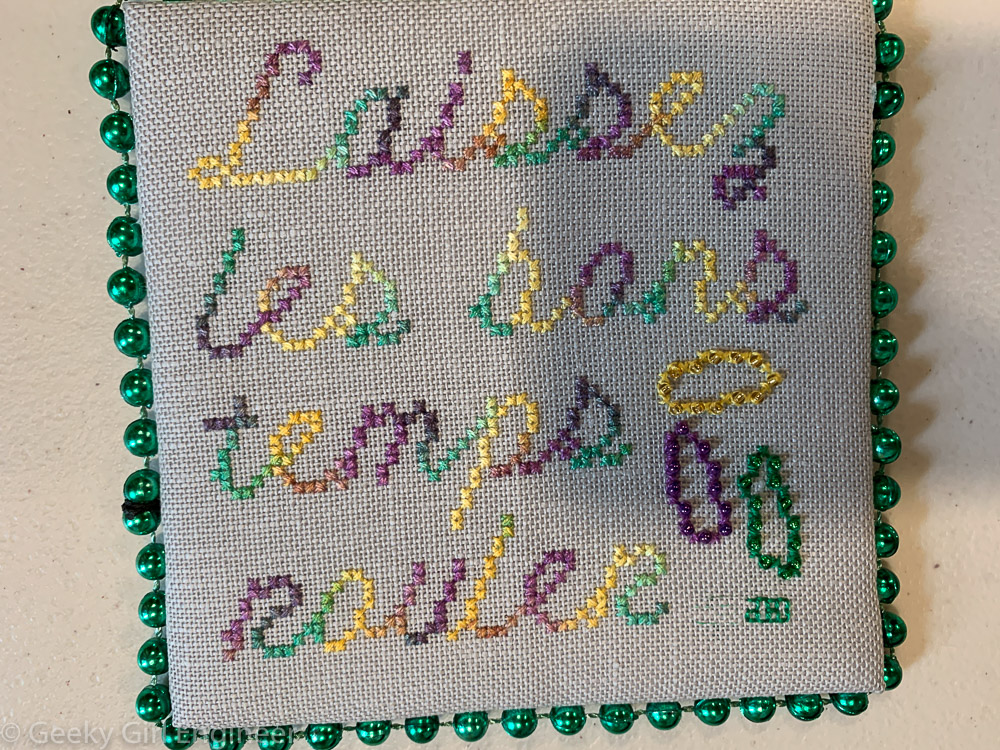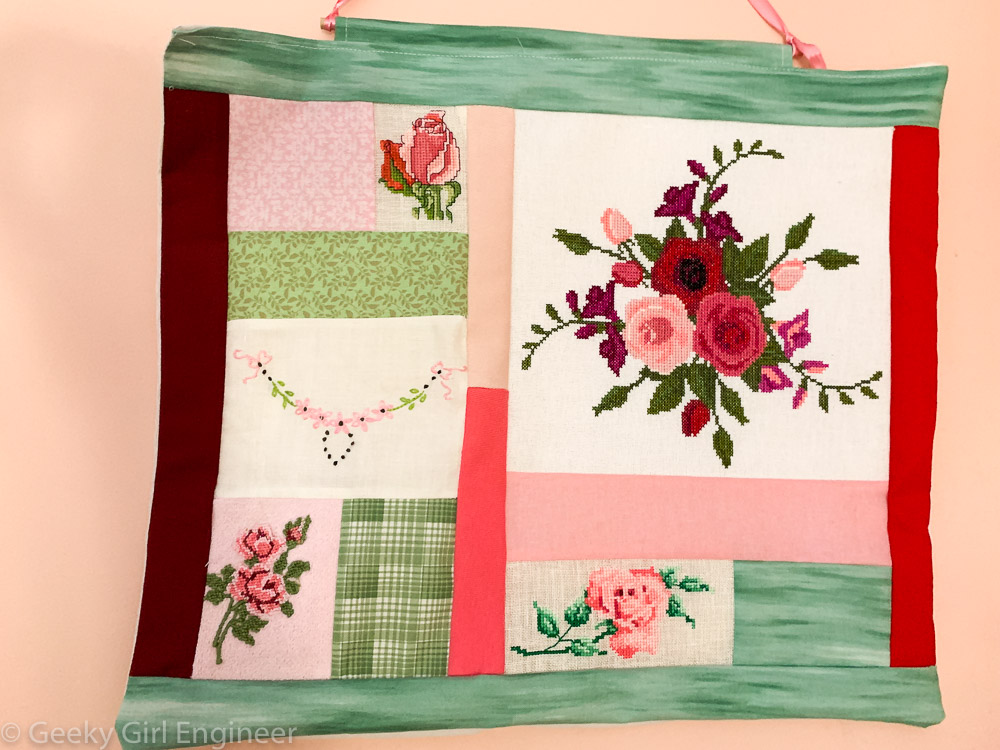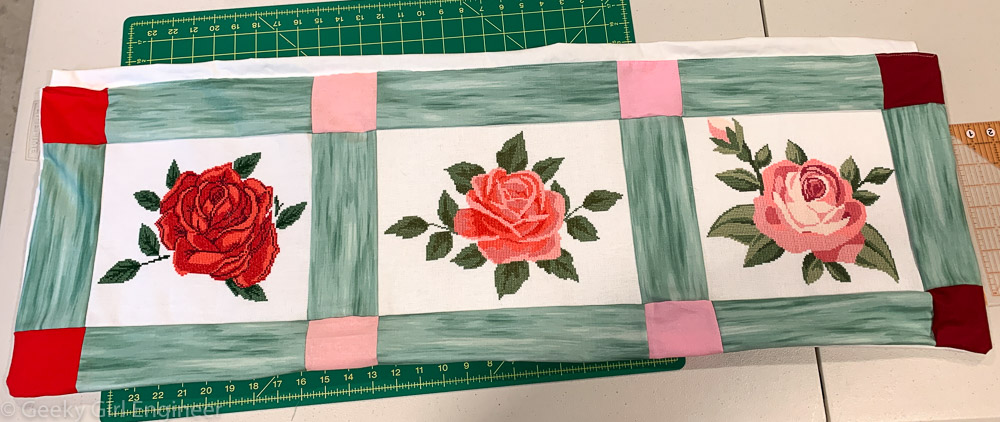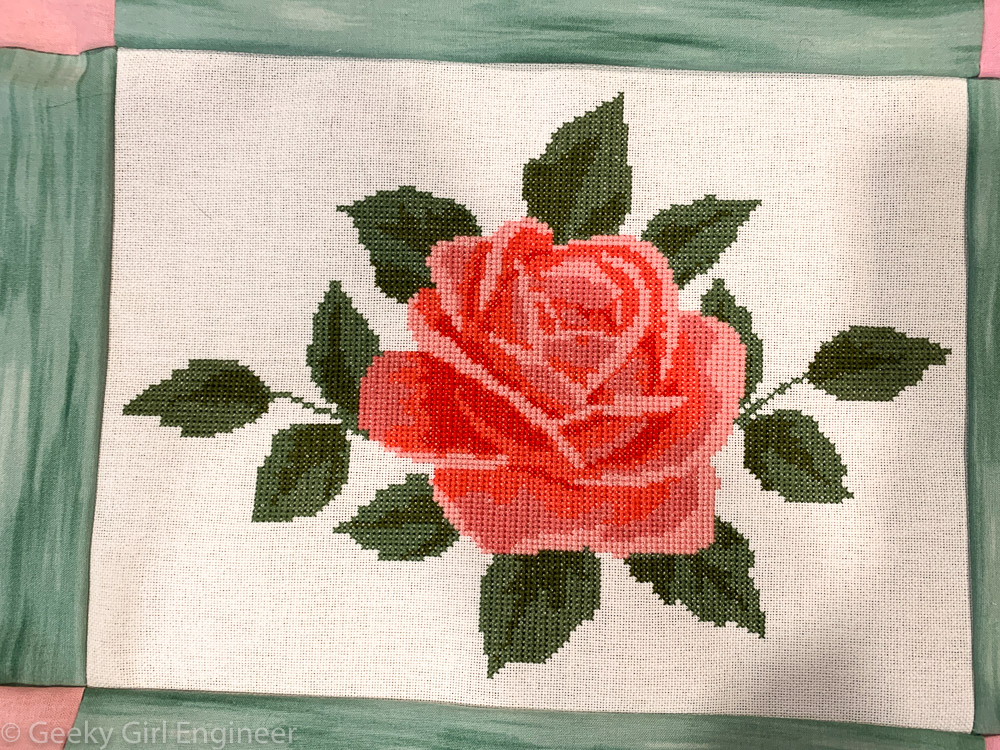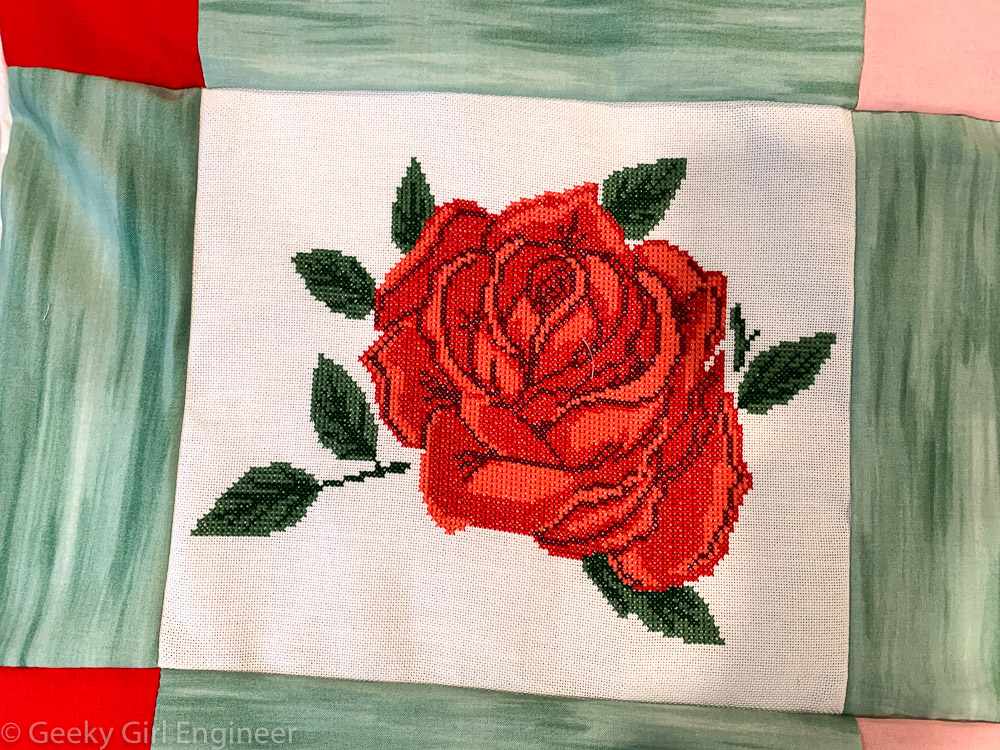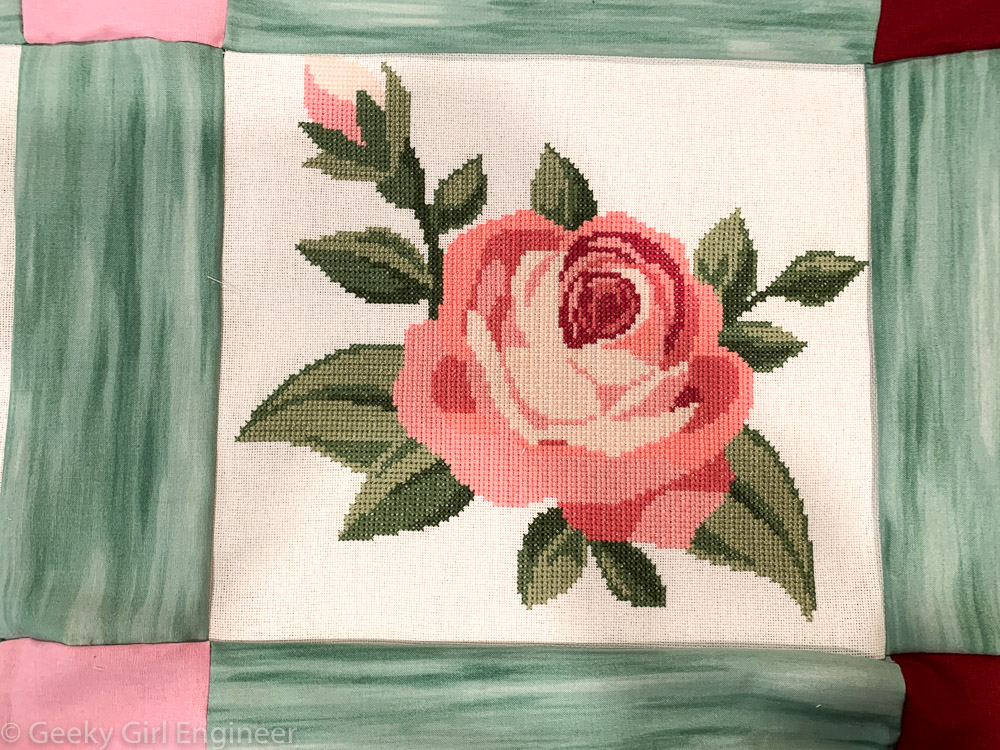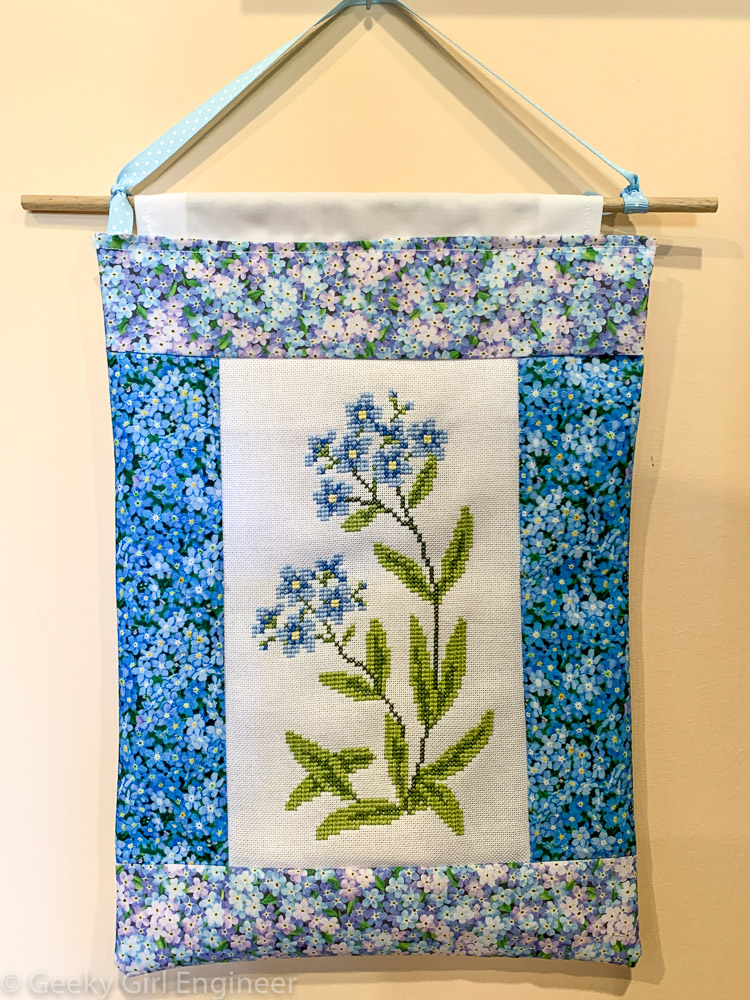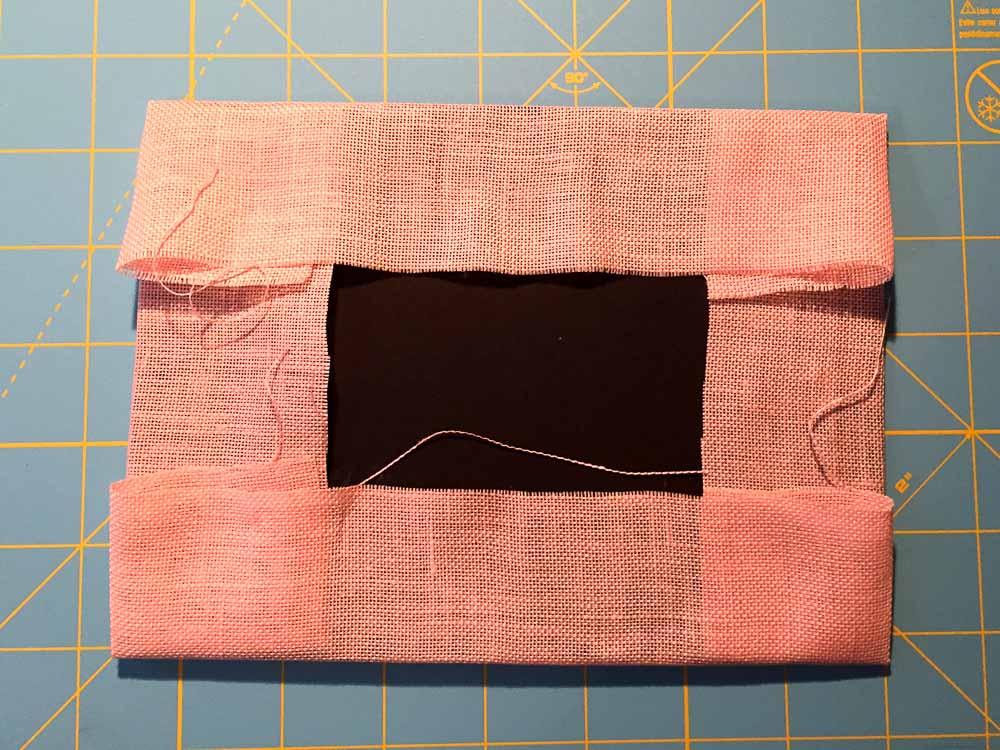I’ve made several Mardi Gras table runners just by sewing simple strips, and I also made one table runner using a pattern I bought. Then I had some leftover fabric pieces as well as some fabric I really loved and wanted to use for something special. Also, I had found a really nice fleur de lis cross-stitch pattern while I was in New Orleans, and I wanted to use the cross-stitch for something special. So what to do? I decided to make a quilted piece to hang on my front door. Luckily, my front door is actually a set of double doors because my Mardi Gras wreath is hanging on the other door.
The centerpiece of the piece is the cross-stitch for which I used Mardi Gras colors. This was a perfect place to display the cross-stitch.
Since I don’t live in New Orleans, I decided perhaps I need to make it completely clear what my decorations are for, so on the absolutely wonderful fabric by Dear Stella that I just love, I machine embroidered “Happy Mardi Gras.” I love the beads on a fence design, and with just a little work to get the spacing right, the white space allowed me to embroider the greeting.
Then I just used left over fabric from the table runners to complete the piece. This included the back, which is entirely composed of leftover fabric stitched together.







